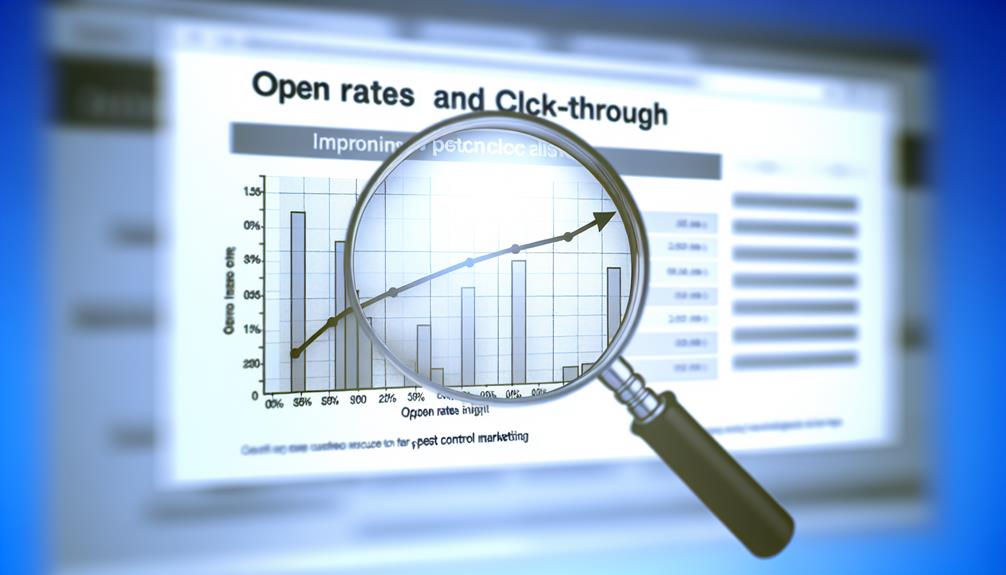Are you tired of pests invading your space and causing havoc? Looking for effective ways to reach out and engage with your target audience? Look no further.
In this discussion, we will explore three essential email marketing strategies specifically tailored for the pest control industry. These strategies will not only help you build a strong subscriber list but also enable you to craft compelling and relevant email content that resonates with your audience.
And that’s not all – we’ll also dive into the art of analyzing and optimizing your email campaigns to maximize their performance. So, if you’re ready to take your pest control business to new heights, let’s dive in and discover these game-changing strategies together.
Table of Contents
ToggleKey Takeaways
- Employ strategic techniques and email segmentation to engage potential customers and send targeted and personalized emails.
- Offer valuable lead magnets, such as e-books and checklists, to provide real value and solve a problem for the target audience.
- Craft engaging and relevant email content by employing personalization techniques, addressing specific concerns, and optimizing subject lines.
- Analyze and optimize email campaign performance through segmentation, personalization, A/B testing, and data-driven decision-making to maximize results.
Building an Email Subscriber List

To effectively build an email subscriber list for your pest control business, you need to employ strategic techniques that engage potential customers and encourage them to sign up for your valuable content. One of the most effective techniques is email segmentation.
By dividing your subscriber list into different segments based on their interests, preferences, or behavior, you can send targeted and personalized emails that resonate with each segment. For example, you can create segments for customers interested in residential pest control, commercial pest control, or specific pest problems like termites or bed bugs.
This allows you to tailor your email content to their specific needs and concerns, increasing the chances of conversions and customer loyalty.
Another important technique is lead magnet creation. A lead magnet is a valuable piece of content that you offer to potential subscribers in exchange for their email address. It can be an e-book, a checklist, a video tutorial, or a discount coupon. The key is to create something that provides real value and solves a problem for your target audience.
For example, you can offer a free guide on preventing common pest problems in homes or a checklist for choosing the right pest control service for businesses. By offering something valuable, you can entice potential customers to provide their email address and join your subscriber list.
Crafting Engaging and Relevant Email Content
Crafting engaging and relevant email content requires personalization techniques and subject line optimization. To create engaging emails, employ personalization techniques such as addressing subscribers by their first name and using segmentation to send targeted content based on their specific pest control concerns. This level of personalization shows that you understand their needs and are there to help.
Subject line optimization is crucial for grabbing your subscribers’ attention and enticing them to open your emails. Keep your subject lines concise and compelling, using action verbs and creating a sense of urgency. For example, instead of a generic subject line like ‘Pest Control Tips,’ try ‘5 Effective Ways to Get Rid of Ants Today!’ A well-crafted subject line ensures that your emails stand out in crowded inboxes and entice subscribers to click through.
Analyzing and Optimizing Email Campaign Performance

Now that you have successfully crafted engaging and relevant email content for your pest control subscribers, it’s time to analyze and optimize the performance of your email campaigns.
One way to do this is by using email segmentation techniques. By dividing your subscriber list into smaller groups based on their interests, demographics, or past interactions with your emails, you can tailor your campaigns to better suit their needs. This personalization can lead to higher open rates, click-through rates, and ultimately, more conversions.
Another strategy to optimize your email campaigns is through A/B testing for email subject lines. This involves creating two different subject lines and sending them to a small portion of your subscriber list. You can then analyze the performance of each subject line, such as open rates and click-through rates, to determine which one resonates better with your audience.
Once you have identified the winning subject line, you can use it for the rest of your subscriber list, increasing the chances of your emails being opened and read.





